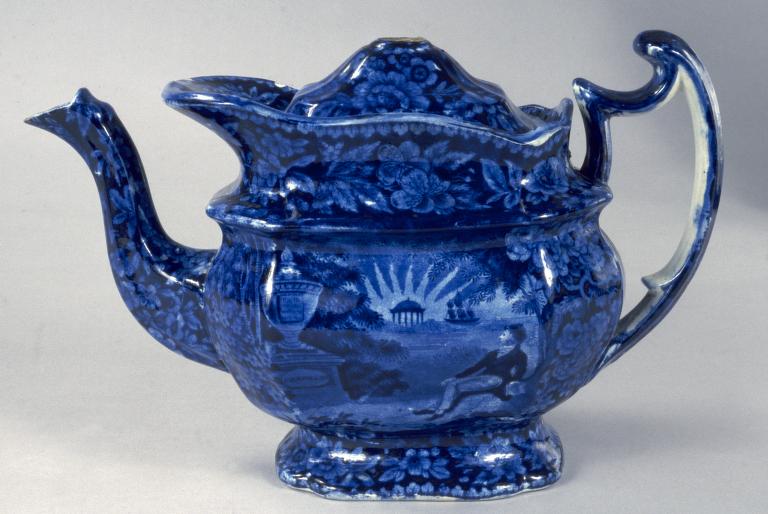|

(c) Pocumtuck Valley Memorial Association, Deerfield MA. All rights reserved.
Customs : Marketing Gentility
|
 |
The consumer revolution of the eighteenth and early nineteenth centuries fueled a boom in mass-manufactured goods such as textiles and ceramics. Earlier economic and social theories assumed that the working poor must remain poor or they would lose their incentive to work. These beliefs now gave way to a new sense that working people would toil to buy what they wanted in addition to what they needed to survive.
The social implications of this consumer revolution were profound. Along with the increased availability of goods came the awareness that the gracious living they represented was also no longer confined to the wealthy. Now, middling sorts aspired to gentility through objects that embodied personal refinement and leisure at odds with the reality of their working lives. Although this emphasis on gentility seemed out of place with the republican, anti-monarchical spirit of the age, in fact it marked the democratizing of gentility. Now, anybody could aspire to be a "gentleman" or "gentlewoman" when formerly only a tiny minority could ever hope to attain that status.
Tea drinking exemplified the way in which consumerism broadened the concept of gentility. The act of taking tea was originally confined to the wealthy. It required tea accessories and the leisure to drink it socially. It presumed that polite conversation would accompany the tea, another hallmark of gentility formerly out of reach of those who could not afford the time to acquire such graces. This teapot illustrated the new consumerism and democratization of gentility in the decades following the American Revolution. Advances in technology and industry enabled English manufacturers to produce cheap earthenware that resembled more expensive porcelain. This mass-produced English-made ceramic teapot depicted a Revolutionary war hero, the Marquis de Lafayette of France, visiting the tomb of Benjamin Franklin (1706-1790).
top of page
|
Teapot - "Lafayette at the Tomb of Franklin"
| creator Enoch Wood and Sons [Attributed to] |
| date 1824-1835 |
| location England |
| width 7.625" |
| height 11.5" |
| process/materials transfer print |
| item type Household Goods/Food Service Tools & Equipment |
| accession # #1989.521 |
|





